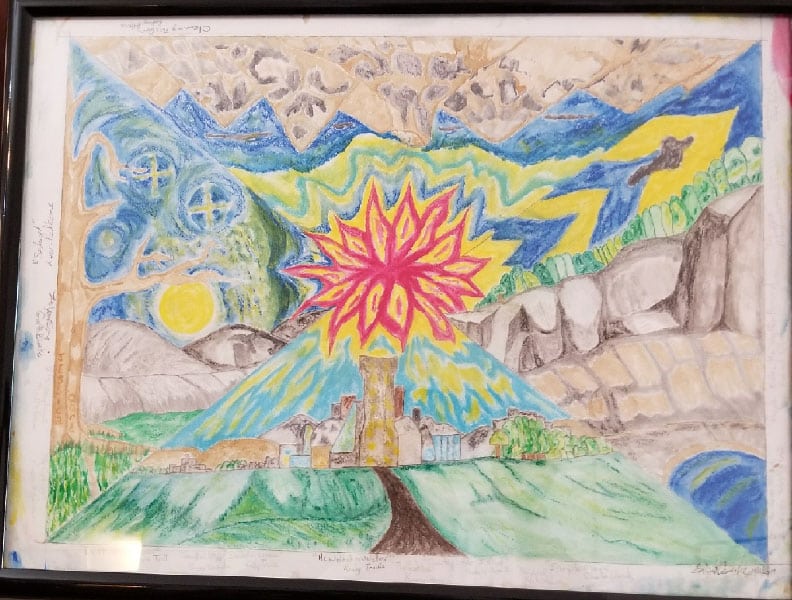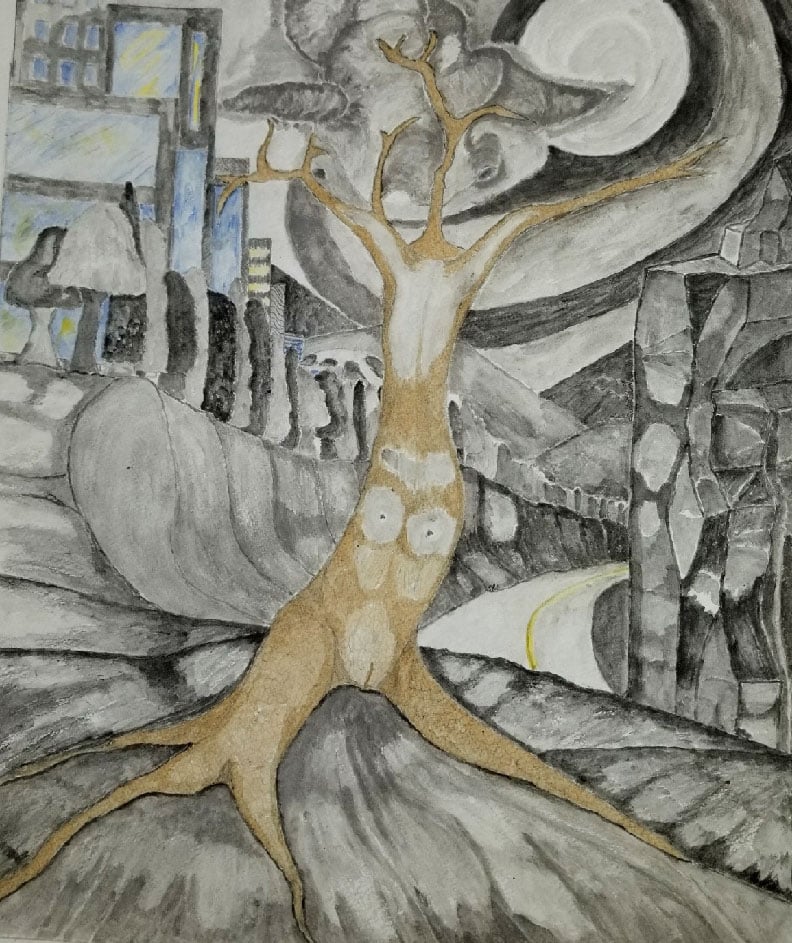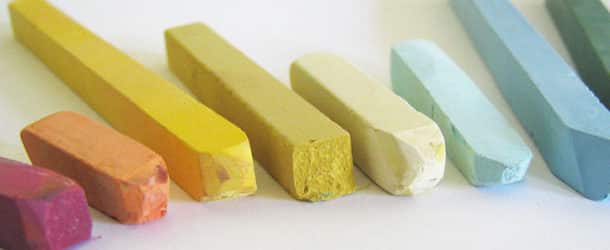Local Artist Earnest Courville Has A Unique Approach To Color
By Brad Goins
When local resident Earnest Courville’s beloved wife was dying of cancer 12 years ago, he spent his long hours in the waiting room creating one pen and ink drawing after the other.

Most of the color comes from soft pastels that Courville applies by brush, almost, he says, as if he were applying water color.
But some of the colors come from another source — a source that makes Courville’s art work unique. His light and dark browns, and even darker colors still, come from coffee — coffee in a myriad of forms.
To hear Courville tell it, he is something of a coffee-drinking fiend. He likes to make his own in an old school metal espresso cooker that sits on his stove top. But he also makes a habit of putting in long stints in area coffee shops. Indeed, he says, he cannot tell whether his first love is art or coffee.
To get the browns for his art, Courville uses everything from espresso grounds to liquid coffee straight out of the cup. He’s found that the more he rebrews coffee or espresso, the darker a brown he gets.
Creative Technique

Before Courville begins an art work, he draws in a large rectangle in the center of his paper, leaving about a two-inch space along the margins. When he creates, he says, “I do the rectangle, but what happens in there” is not planned or envisioned in advance. What he creates is what he creates. “The paper tells me what it wants.”
“If it feels right,” he says, this process of feeling his way goes on until the art work is complete. But sometimes the sense that things are working goes awry.
“Somehow I lose the feeling I had,” says Courville. “I have stuff that’s incomplete.” He keeps some pads of unfinished work in a filing cabinet. They’re there if he feels like taking up a particular work again.
The idea of letting the creation of an art work be dictated by the unconscious or subconscious is the basic principle of surrealism. And Courville’s works do usually have at least a vague sense of surrealism to them. The landscapes have elements that look familiar in them, but at the same time, don’t look quite like any landscape we’ve seen. Then there may be a landscape that looks typical enough except for the fact that a huge ball of fire is floating in the sky.
In one painting of a jazz ensemble, one musician (the drummer) looks smaller than a child while another musician looks to be the size of a giant. But it’s not a trick of perspective, as the tiny drummer sits up front. Is this textbook surrealism? It’s certainly not old school realism.
Of course, it’s often risky to categorize artists — especially when they aren’t categorizing themselves. The main thing to remember about Courville is that he lets his art happen as it happens.
Collectors And Shows
Courville has long been friends with local leader Sam Schoolsky. Through their conversations, the idea of Courville creating art for Lake Charles’ Jewish Temple Community Room arose. The themes to be represented were the Wailing Wall and the death camp at Auschwitz.
Courville felt he was qualified for the project because he had learned about Auschwitz by watching the old Walter Cronkite’s You Are There historical TV shows of the 1950s. Soon Courville’s completed works were hanging on the walls of the of the Jewish Temple Community Room.
Schoolsky and Courville spent much time sitting together in the old Starbucks near Wal-Mart as Courville created the images. Then as now, Courville has spent many, many hours drawing in local coffee shops.
Courville’s work has been collected by chef Mohammed of La Truffe Sauvage. Of the 10 other individuals or families who own his work, most are in or near this area; but some live as far afield as Phoenix and Arlington, Va.
Courville’s work has hung in a number of local institutions. It’s most frequently seen in — no surprise — a coffee shop: the downtown Lake Charles gathering place Stellar Beans. Courville will be holding his fifth exhibit in the venue during the month of February. Stop by for some art that’s decidedly different from the norm. See if you can spot the coffee.
















Comments are closed.